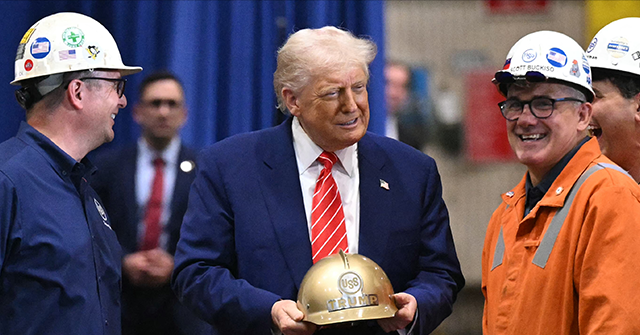Mo’ Money, Fewer Problems
By historical standards, it is rare for wages to outpace prices. Not because it’s impossible, but because the usual pattern is self-defeating: rising wages lead to rising demand, which feeds into higher prices when supply is constrained by taxes on investment and burdensome regulation. Inflation then erodes the very gains it seemed to promise. Sustained real wage growth generally requires something else—productivity gains, surging investment in production, or a shift in the structure of demand—to break the loop.
At present, that “something else” is here. Over the first five months of 2025, average hourly earnings have risen 1.5 percent, while headline consumer prices have climbed just 0.7 percent. On an annualized basis, wages are rising at 3.7 percent, while inflation is running at 1.7 percent. That puts real wage growth just under two percent—the strongest sustained improvement in purchasing power in years.
This isn’t a statistical fluke. The May CPI rose just 0.1 percent, marking the fourth consecutive month of below-expectation inflation. Core inflation matched that same tame pace. Key categories that had driven prices higher over the past two years—vehicles, airfare, apparel—are now moving in reverse. Gasoline fell 2.6 percent in May and is down 12 percent over the past year. Energy prices as a whole are down 3.5 percent. Even shelter inflation, while still contributing to overall CPI, has leveled off at a manageable 0.3 percent monthly gain.
Paychecks Are Getting Stronger, Not Just Bigger
The labor market is adjusting smoothly. Nonfarm payrolls grew by 139,000 in May. The unemployment rate held steady at 4.2 percent. Wages climbed 0.4 percent on the month and are up 3.9 percent over the past year. Average hourly earnings for nonsupervisory workers reached $31.18. These are strong gains; and more importantly, they’re no longer being neutralized at the cash register.
The drop in the labor force participation rate—down 0.2 points to 62.4 percent—has been widely misunderstood. Much of that decline reflects a retreat in illegal immigrant participation, not a weakening of domestic labor supply. The employment-population ratio also dipped slightly, but there’s no indication of widespread labor market slack. On the contrary, wage growth remains robust, and job gains are still concentrated in core domestic services like health care, restaurants, and social assistance.
President Donald Trump delivers remarks at the U.S. Steel-Irvin Works in West Mifflin, Pennsylvania, on May 30, 2025. (Daniel Torok/Official White House Photo via Flickr)
What’s happening now is exactly what economists and central bankers claim they want but rarely get: inflation retreating while wages rise. That’s not a mystery—it’s a signal that supply is catching up, not that demand is collapsing. Productivity growth has improved. Energy prices have declined. And after years of asset inflation and speculative detours, investment is finding its way back into the real economy—into logistics, energy, and domestic production.
It’s Time for the Fed to Cut
The Federal Reserve, if it is as “data dependent” as it says, has every reason to begin adjusting policy. The inflation threat has passed. Wage growth is steady, not spiraling. The economy is stabilizing, not faltering. We have been hesitant to join President Trump in his call for cuts because we thought a revival of inflation would be economically damaging and not worth risking based on one or two months of good inflation data. But we’re now four months into good inflation data. A cut now would be an affirmation that monetary policy still serves the economy, not the other way around.
Real wages are rising. Prices are not. The economy is healing—not in theory or through tortured revisions, but in real-time and at the household level. For once, the American worker is gaining ground—and there’s no law of economics that says it must be brief.
Read the full article here


